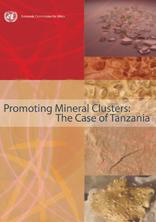Promoting Mineral Clusters: The Case of Tanzania

Tanzania’s mineral endowments are considerable. It has large reserves of non-fuel resources like gold, diamonds, coloured gemstones, nickel, tin to name a few. In the wake of the liberalization of the economy, the government has been heavily promoting private investment in the minerals sector. This has transformed the minerals sector of the country into the fastest growing sector of the local economy. From 1999 to 2003, the value of output in the minerals sector grew by an average of nearly 15% per year, mainly because of substantial increases in gold production, a result of many projects coming on stream. During the same period, the value of output in the construction and electricity/water sectors grew by an average of 10% and 4% respectively. While giving a speech on the “State of the Economy” to the parliament in July 2007, the Minister for Planning reported that the mining sector contribution to the country’s GDP in 2006 was 3.8% which was an increase from 3.5% in 2005. The value of Tanzania’s mineral exports has risen substantially since 1999. Most of the increase is due to gold exports, which increased in value to US$504.1 million in 2003 from US$ 374.3 million in 2002 and US$39.8 million in 1999. The share of total exports attributable to minerals rose to 48% in 2003 (44% gold and 4% other minerals such as diamonds and coloured gemstones) from 42.5% in 2002 and 13.5% in 1999. Tanzania’s minerals industry, particularly gold mining, is likely to grow substantially in the near future as a result of increased investment in new projects. Estimates are that gold production would reach 59 t in 2005 and 61 t in 2007, with the potential to generate in excess of US$ 900 million of exports at prices of US$500/oz. This would represent more than 50% of the country’s total exports.